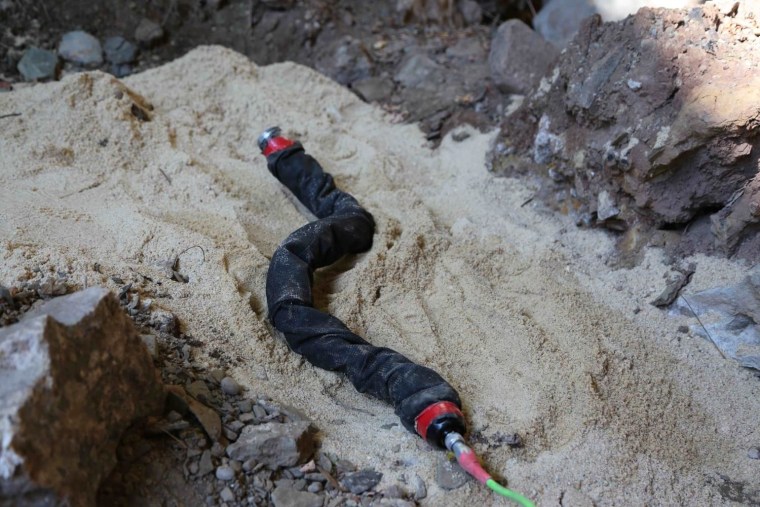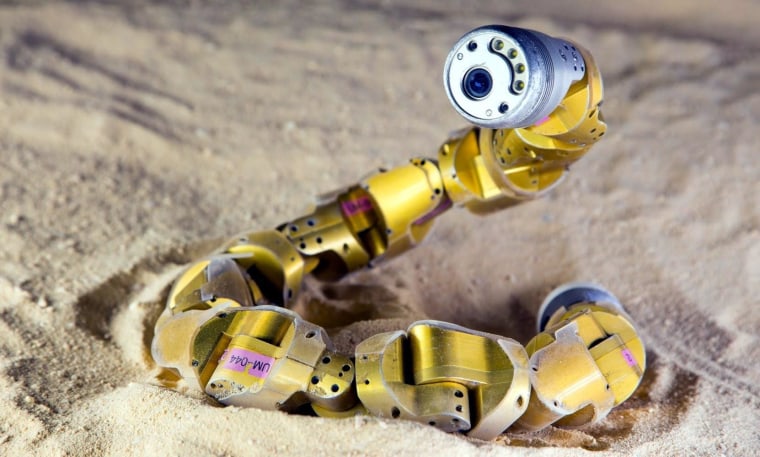The sinuous movement pattern of a desert snake sidewinding its way up a sandy slope is fascinating to watch, but it also presents a physical conundrum. How is it that certain snakes can ascend a dune so easily, while others writhe helplessly and mammals lumber ponderously as their feet sink into the granular surface? Researchers have determined the subtle yet effective technique employed in sidewinding by observing it in action — and imitating it with a snake-like, segmented robot.
"Our initial idea was to use the robot as a physical model to learn what the snakes experienced," explained the Georgia Institute of Technology's Daniel Goldman, one of the study's authors, in a news release. "By studying the animal and the physical model simultaneously, we learned important general principles that allowed us to not only understand the animal, but also to improve the robot."

Indeed, even after close observation of a sidewinder as it slid up an artificial dune covered with real Yuma Desert sand, the team couldn't get "Elisabeth," a long, flexible robot that has been under development for years, to recreate the style of motion.
Researchers observed that the real snake created waves in its body not only from side to side, but up and down; these waves of motion travel down the body and give the snake purchase on the ground at key points. But it was only after failing to replicate sidewinding that they noticed that the snake also changed the amount of its body that was actually in contact with the sand, laying down more or less of itself to spread its weight correctly and give maximum grip.
Armed with this new information, Elisabeth the snake-bot was enabled to wind her way up the sand dune, something even other snakes, accustomed to simple forward slithering, were unable to do.
Studying such movement methods allows roboticists and others to design better systems for locomotion and navigation, areas of great importance for autonomous and semi-autonomous robots. The study appeared in this week's issue of the journal Science. In addition to Georgia Tech, the authors hailed from Carnegie Mellon University, Oregon State University and Zoo Atlanta.
